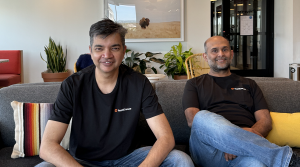The 80/20 Rule: How To Balance Analytics Staff With Data Scientists
![]() Big data may have led to the creation of the position of “data scientist,” but not every question of analytics requires that specific kind of expertise. Or at least that’s what Rahul Deshmukh, Director of Web Intelligence for analytics platform developer Splunk, wrote in a blog entry this week.
Big data may have led to the creation of the position of “data scientist,” but not every question of analytics requires that specific kind of expertise. Or at least that’s what Rahul Deshmukh, Director of Web Intelligence for analytics platform developer Splunk, wrote in a blog entry this week.
A data scientist, to use the conventional definition, is a professional with skills in statistical analysis, programming and business, such that they can look at huge amounts of data and provide a meaningful narrative that can give an organization a series of actionable insights. To that end, professional data scientists find algorithm development to be a major part of the job description.
But there are still many, many problems that require statistical analysis on its own: user experience optimization, online channel performance or site testing don’t really demand that kind of high-level insight generation. Instead, a professional with more of a focus in SQL or regular expressions and perhaps less of one in statistics or data manipulation is called for. Obviously, there’s some overlap between the two, as expressed in this Venn diagram prepared by Deshmukh:

The key to balancing the two and maximizing value lies in the concept that a data scientist should really be looking at the future, figuring out better questions to ask of your big data repositories and drawing insights from real-time analytics rather than doing the relatively simple stuff.
So the key for the enterprise, writes Deshmukh, is to balance the two. Only about 10 to 15% of all analytics problems actually require a data scientist, he postulates, so to keep that in perspective, a good guideline to follow is simply 80 percent analytics, twenty percent data scientists, when you’re looking to staff a big data team.
As Deshmukh acknowledges, that might be easier said than done. Not only is talent in relatively short supply, but not many companies necessarily know that they need a data scientist on staff yet. But Deshmukh and I agree that both those trends are going to skyrocket over time.
A message from John Furrier, co-founder of SiliconANGLE:
Your vote of support is important to us and it helps us keep the content FREE.
One click below supports our mission to provide free, deep, and relevant content.
Join our community on YouTube
Join the community that includes more than 15,000 #CubeAlumni experts, including Amazon.com CEO Andy Jassy, Dell Technologies founder and CEO Michael Dell, Intel CEO Pat Gelsinger, and many more luminaries and experts.
THANK YOU









